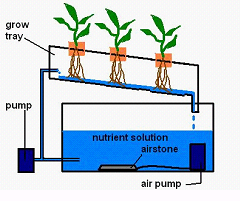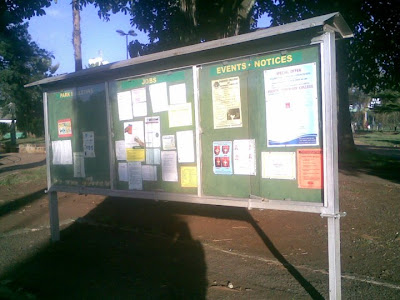 |
| Illustrated plants From gardenweb.com |
"Hydroponic" refers to water in Latin. In gardening terms, basically its the art of growing plants in soil less medium containing mineral nutrient solutions.There are two types of hydroponics:the solution culture and the medium culture.Here i discuss medium culture which as one of the farming methods is taking root faster in both commercialized agriculture and hobby farming.
It might sound so complicated at this stage but it doesn't have to. You are quite aware that for any plant to perform well all growing conditions (minerals,water,light) need to be met at the right time and in the right amount. The same happens in hydroponic farming whereby plants are grown in mediums and nutrient solutions with a well balanced pH system. In such an instance a plant uptakes minerals at a faster rate compared with a soil medium.
Basic Requirements For Most Hydroponic Systems.
- A Growing Medium: This is an inert material which doesn't provide any nutrients to the plant but allows the plant to grow. Examples of growing mediums include ,gravel, sand, coconut fiber.clay aggregate,rock wool,wood fiber,pumice among others.The main considerations to be put in place when choosing a growing medium are: it must be inert, pH neutral and have absolutely no nutrient value.
- A submersible pump for watering the plants.
- Light either artificial or natural .
- An air pump to supply oxygen to the plants
- An inexpensive timer for ensuring the plants are watered at a particular time.
- A water reservoir.
- A growing tray.
There are many types of hydroponics as a result of constant variations.Among them include Wick,Ebb and flow(flood and irrigation), Bubbleponics, Nutrient film technique,Aeroponics among others. I chose in this section to discuss NFT which seems easily applicable and a favored choice by many.You can read in depth about these other systems HERE though each one of them will have a post to it later on.
Nutrient Film Technique
Its documented to be the first technique of hydroponics.Here is a model for the same.
 |
| diy-guides.com |
NFT doesn't use a growing medium except air.The nutrient solution gets pumped from the reservoir to the grow tray.Water is then drained to the reservoir and the recycling process continues on and on.
NOTE: The growing tray is tilted at an angle.This is to enable the water to flow at a constant that is neither fast nor slow to aid in nutrients distribution. No timer is needed as the system is designed to have a constant supply of nutrient solution and Plants get support using small plastic bottles and the roots are left to hang freely in the nutrient solution.
Step by step detail to creating an NFT can be found by clicking this link DIY Guide to Building an NFT Hydroponic System and the video below on how NFT hydroponic system works and the advantages and disadvantages that come with the NFT technique.Enjoy!
Resources to further reading
Science Tech Entrepreneur :Hydroponics


